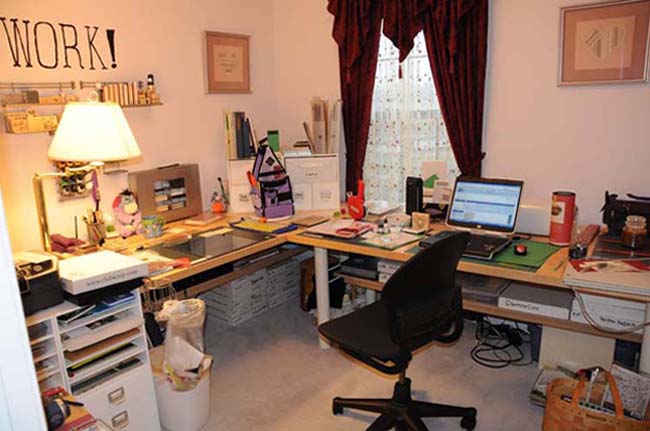
This layout is my version of one that Lie Fhung of Ztampf! created to showcase her kit, Burnin'Love. The flames for the photo shape were a mask. The mask came with the kit, and I had to work with it a bit to learn how to size and align the photo the way I wanted.
A mask is a way to hide or reveal part of your image. You can also use a mask to hide or reveal part of your image to the adjustment tool you are using, like color or exposure adjustment. In that case, you'd be using a masked adjustment layer. Most of the time, you want to add your mask as a separate layer so you can edit the mask and work with more or less of your image without editing the image itself.
There are several types of masks. The layer mask shows up as black, on a white or transparent background. The mask that came with Burnin' Love was black on a transparent background. A vector mask is gray, not black. A vector mask is one that you can scale to any size with no loss of detail. The quick mask shows up as pink that you can see through. If you can't see it because your image is already pink, you can set a different color for the quick mask.
To create a mask you have many options. You can also change one type of mask into a different type of mask. But usually, you start with a selection. The marching ants are great, but they are temporary. One mouse click on the image outside the selection and you have nothing. To save that selection so you can work with it, you need to convert it to a mask. To make things really interesting, don't forget that you can change a mask into a selection as well. But try to think of selections as temporary and masks as persistent.
What used to confuzzle the dickens out of me was that I was never sure if the area covered by the mask would be affected or if the area not covered by the mask would be affected. The correct answer is, "It depends." In general, you make sure that the layer mask is the active layer. Then use a paintbrush to paint with black to hide parts of your image or paint with white to reveal parts of the image.
To use a mask that you just downloaded, you want to open the mask in Photoshop as a separate document, then select all and copy. Go to your layout and turn on the Quick Mask mode. Then paste in the mask. Transform or edit the mask to make it the size you want and make sure that it is positioned where you want it. Exit Quick Mask mode and you'll have marching ants instead of the mask. Make sure the layer you want the mask to affect is active and then click on the Add Layer Mask icon at the bottom of the layers palette. Poof! You are done!





No comments:
Post a Comment